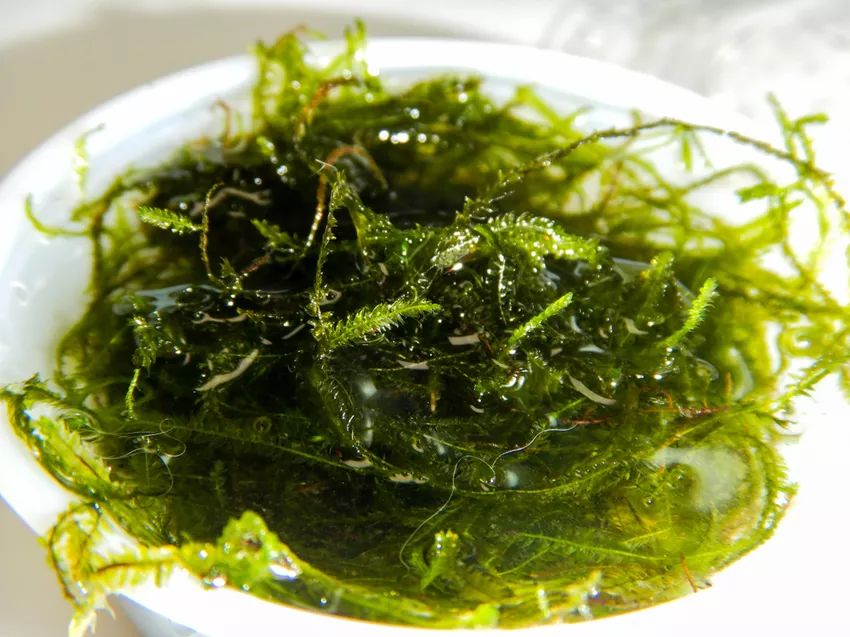- natural propagation
- spores in the aquarium
- Simple propagation option
- Untie java moss
- Stimulate new growth
The light green java moss is a versatile plant in the aquarium. It can be used to lay out areas like a carpet. Or unwanted objects are nicely covered. For this, the moss must be propagated occasionally. That shouldn't be difficult for anyone.
 Java moss can easily be divided
Java moss can easily be divided
natural propagation
In nature, Java moss reproduces as follows: it forms brown capsules containing spores. After these are mature, the capsules open and the spores are released. They are carried away to other places where they settle and develop into new plants.
However, sporulation is rarely triggered. This in turn is due to the fact that the java moss also thrives under unfavorable conditions and poor lighting conditions. In other words: In nature there is rarely a need for new specimens.
spores in the aquarium
Propagation by spores is not possible in the aquarium. Because the brown capsules are not formed under water. This means of propagation is therefore not suitable for the home.
Simple propagation option
Although the java moss does not form spores in the aquarium, it can reproduce at almost any time. To do this, the existing moss is simply halved or, if necessary, divided into even more parts. A new java moss plant can even grow from very small pieces.
tips
Be careful when pruning as the delicate branches can easily break off. They then float around in the water.
Untie java moss
The separated pieces of moss need a new place where they can continue to grow. Be it rock, root or any decorative item, the java moss is not picky. It can conquer just about anything with its clinging roots.
The young java moss starts to form new adhesive roots after a two-week acclimatization period. It will take a few more weeks for it to grow. In the meantime, give it some support by securing it with twine.
Stimulate new growth
In order for a small piece of moss to form a broad carpet, it has to be cared for properly. This is how you accelerate its growth.
- provide plenty of light
- Change water regularly
- fertilize with liquid fertilizer
Java moss has a large temperature tolerance. But it grows fastest when the water temperature is around 24 degrees Celsius.